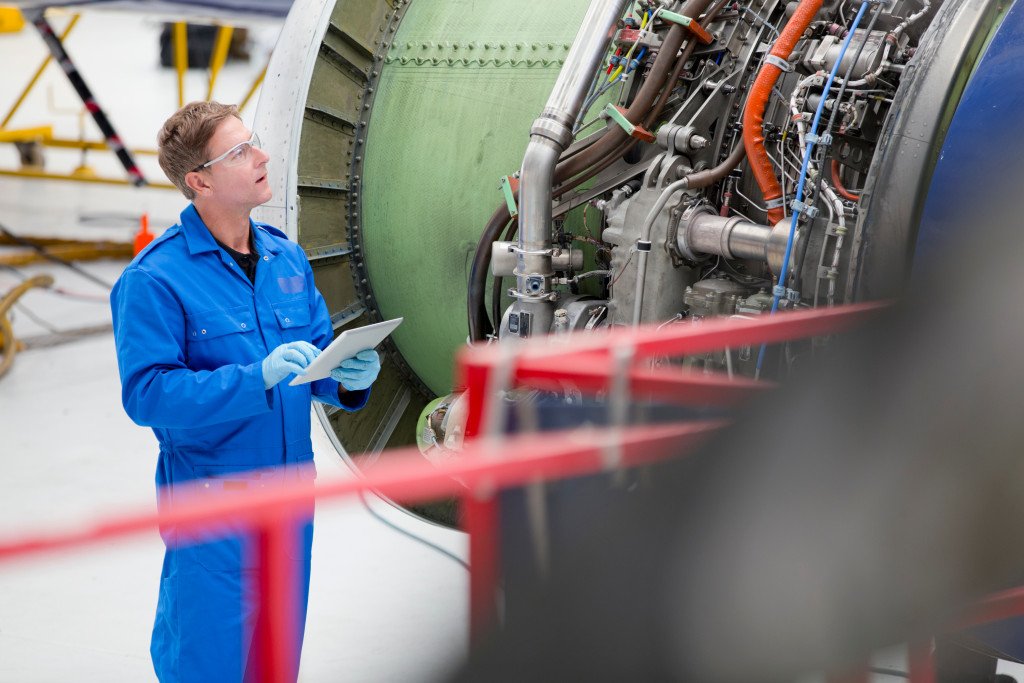• Magnetic chip detectors detect metallic particles in the oil stream of an aircraft engine, allowing engineers to identify damage.
• Pitot static testers measure air pressure in an aircraft, providing crucial information about the speed, altitude, and direction of the plane.
• Fuel injector cleaners help remove carbon deposits that can build up on injectors and cause them to become clogged or malfunction.
• Ignition system analyzers measure ignition timing on engines, allowing engineers to make adjustments for optimal performance levels.
• Engine balancers measure vibration levels inside an aircraft’s engine, helping identify any imbalances between pistons or other moving parts.
Are you in the aviation industry and are looking to optimize the performance of your aircraft engines? Then you’re in luck! In this blog, you will learn about innovative technologies that can help improve the performance of your aircraft engine and maximize its efficiency.
Magnetic Chip Detectors
Magnetic chip detectors are used to detect metallic particles in the oil stream of an aircraft engine. These particles can indicate potential damage or wear and tear on certain critical parts of an engine, such as bearings, gears, or seals. By regularly inspecting these components with a magnetic chip detector, engineers can ensure they function correctly and reduce any potential downtime due to mechanical failure.
Pitot Static Testers
You need to buy pitot static testers to detect and measure air pressure in an aircraft. This technology provides crucial information about the plane’s speed, altitude, and direction. If a pilot has accurate readings from her pitot static tester, she can make sure that her plane is flying at optimal speeds and with maximum efficiency.
Fuel Injector Cleaners
Fuel injector cleaners are designed to remove carbon deposits from fuel injectors inside an aircraft engine. Over time, these deposits can build up on injectors and cause them to become clogged or malfunction. Regularly using a fuel injector cleaner can help keep your aircraft engines running smoothly and efficiently by removing any buildup from the injectors.
Ignition System Analyzers

Ignition system analyzers are devices used to measure ignition timing on engines. They use sensors placed near spark plug wires that measure the electrical current passing through each wire at different times during ignition cycles in order to determine if there is any misfiring occurring within the engine. By regularly using this tool, engineers can identify areas where timing adjustments must be made to improve performance.
Engine Balancers
An engine balancer is a device used to measure vibration levels inside an aircraft’s engines. It measures vibrations at various points throughout an engine’s cycle to identify any imbalances between pistons or other moving parts within the motor itself. By routinely checking for imbalances with this tool, engineers can make sure their engines are running as smoothly as possible while minimizing potential problems down the road.
How to implement these technologies properly
Now that you know about several technologies that can optimize the performance of your aircraft engine, it’s essential to ensure that they are all being used properly. Here are the steps you need to take to ensure that you’re getting the most out of these technologies:
Set up a maintenance plan for each technology
Setting up a maintenance plan for each of these technologies is vital to ensure their proper functionality. This plan should include regular inspections and maintenance so that any potential problems can be identified quickly before they become more significant issues.
Train engineers on how to use the technologies
It’s essential to make sure that your engineers are adequately trained in how to use each of these technologies. They should know how to operate the equipment, interpret readings, and make any necessary adjustments for optimal performance.
Monitor the performance of the engine

Regularly monitoring the performance of your aircraft’s engine is another important step to take. This includes tracking fuel efficiency, power output, and other key metrics so that you can identify any areas where improvements may need to be made.
Document all maintenance activities
Finally, it’s essential to document all maintenance activities that have been performed on your aircraft engine. This includes any inspections, repairs, or adjustments you have made so that you can track progress and ensure proper maintenance over time.
By ensuring the innovative technologies discussed above are appropriately implemented into your operations, you can ensure the optimal performance of your aircraft engine and maximize its efficiency.
Leveraging the power of modern technologies can help improve and maintain the performance levels of your aircraft engine. From magnetic chip detectors to fuel injector cleaners, these tools are designed to detect any potential issues before they become significant problems. However, it’s essential to ensure that you have a maintenance plan for each technology in place and proper training for engineers on how to use them properly.
Additionally, monitor engine performance regularly and document all maintenance activities to track progress over time. With these steps taken into consideration, you should be able to maximize the efficiency of your aircraft engine and keep it running smoothly!
